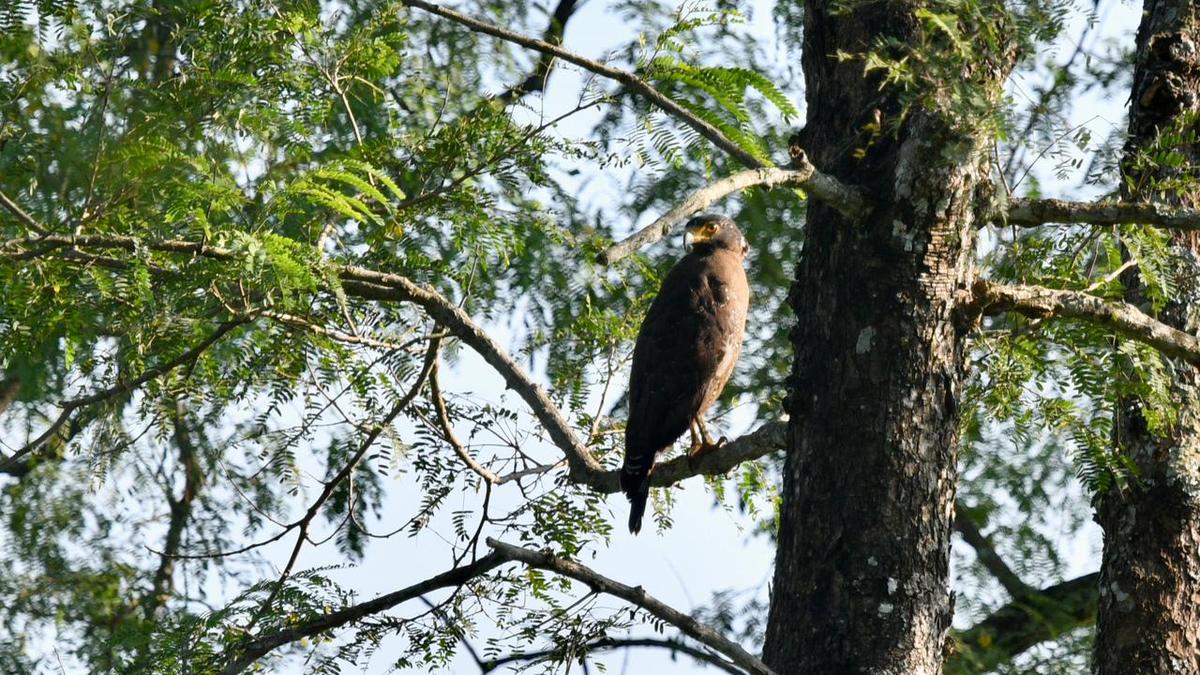Science
Kaziranga Bird Survey Reveals 146 Species, Boosts Conservation Efforts

Kaziranga National Park, a renowned habitat for the world’s largest population of one-horned rhinos, recorded a total of 146 bird species during its latest survey, according to Assam wildlife officials on October 19, 2025. The survey, conducted by the Assam Bird Monitoring Network in collaboration with the park authorities, coincided with the local festival of Kati Bihu, underscoring the park’s integration into regional culture and community activities.
The survey was carried out across five significant locations: the Agoratoli, Gamiri, Panbari, and Panpur ranges of Kaziranga, along with the nearby Laokhowa Wildlife Sanctuary. Surveyors identified a total of 1,919 individual birds across these areas. The Agoratoli range exhibited the highest diversity, boasting 89 species, while both the Gamiri and Panbari ranges recorded 59 species each. The Panpur range accounted for 55 species, and Laokhowa contributed 37 species.
Among the species recorded, two were classified as endangered: the swamp grass babbler and Pallas’s fish eagle. Six species were categorized as vulnerable, including the river tern, greater spotted eagle, slender-billed babbler, lesser adjutant stork, great hornbill, and swamp francolin. Additionally, six species, such as the woolly-necked stork and northern lapwing, were deemed near threatened, while the remaining 132 species fell under the least concern category.
Kaziranga officials noted the presence of several important resident and migratory birds during the survey. Birds such as the blue-eared barbet, bluethroat, grey-headed lapwing, grey-headed woodpecker, greater racket-tailed drongo, and Indian spot-billed duck were highlighted as significant findings.
Community Engagement and Conservation Efforts
The Kati Bihu Bird Count 2025 served as a vital citizen science initiative, fostering community-based conservation efforts. Sonali Ghosh, the director of Kaziranga National Park, emphasized the importance of this initiative, stating, “The active participation of students, youth, birders, and especially women forest staff demonstrated a growing commitment to wildlife conservation in Assam.”
The autumnal Kati Bihu is one of Assam’s three major agrarian festivals, alongside the mid-January Bhogali or Magh Bihu and the mid-April Rongali or Bohag Bihu. By aligning the bird survey with this festival, the initiative not only enhanced awareness but also brought together diverse community members in support of conservation efforts.
As the survey results highlight the rich avian biodiversity within Kaziranga, they also reflect ongoing efforts to protect and preserve this vital ecosystem. The data collected will be instrumental in guiding future conservation strategies, ensuring that both resident and migratory birds continue to thrive in this UNESCO World Heritage site.
-

 World5 months ago
World5 months agoSBI Announces QIP Floor Price at ₹811.05 Per Share
-

 Lifestyle5 months ago
Lifestyle5 months agoCept Unveils ₹3.1 Crore Urban Mobility Plan for Sustainable Growth
-

 Science4 months ago
Science4 months agoNew Blood Group Discovered in South Indian Woman at Rotary Centre
-

 World5 months ago
World5 months agoTorrential Rains Cause Flash Flooding in New York and New Jersey
-

 Top Stories5 months ago
Top Stories5 months agoKonkani Cultural Organisation to Host Pearl Jubilee in Abu Dhabi
-

 Sports4 months ago
Sports4 months agoBroad Advocates for Bowling Change Ahead of Final Test Against India
-

 Science5 months ago
Science5 months agoNothing Headphone 1 Review: A Bold Contender in Audio Design
-

 Top Stories5 months ago
Top Stories5 months agoAir India Crash Investigation Highlights Boeing Fuel Switch Concerns
-

 Business5 months ago
Business5 months agoIndian Stock Market Rebounds: Sensex and Nifty Rise After Four-Day Decline
-

 Sports4 months ago
Sports4 months agoCristian Totti Retires at 19: Pressure of Fame Takes Toll
-

 Politics5 months ago
Politics5 months agoAbandoned Doberman Finds New Home After Journey to Prague
-

 Top Stories5 months ago
Top Stories5 months agoPatna Bank Manager Abhishek Varun Found Dead in Well









